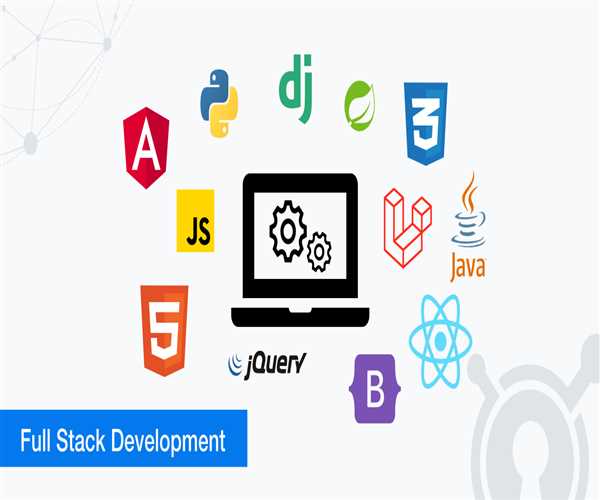Search here

19-Mar-2024 , Updated on 3/19/2024 10:22:25 PM
How to make your career in full stack development in 2024?
Today full-stack development is being viewed as a very dynamic and demanded career path in the tech business. Professionals have an opportunity to create whole web solutions from front to back. Along with the move for such developers, the level of interest among aspiring individuals in full-stack development has also increased. Here is what this blog will cover to guide you through booting up and riding up the career ladder in full stack development in 2024: tips and hints!!!
Understanding Full Stack Development
To truly understand the scope of a career in full stack development after this, we will first get the fundamentals of this field. In full-stack development, the front-end and back-end of the websites or web applications are constructed using the system’s wide range of approaches at once. The front end is all about user interaction and user experience while the back end delivers everything from server-side operations, data processing, fetching data, and API requests to application logic. Full-stack developers have the skills and knowledge needed for front-end development as well as at the back-end. They integrate those skills into user-centric, robust web solutions deliverables.
Why choose to develop a career in Full Stack?
Being a full stack developer has a lot of perks as it is multifaceted, it is in demand in the market, and it has good financial prospects. In contrast with people in specific front-end or back-end development, the stack developers have a wide skill set, hence, they are important resources in today's tech occupied. The Web application growth leads to the increase in demand for full-stack developers across different industries. It opens the way for satellite career development and growth. In addition, control of the overall progression from development to release gives full-stack developers the power to be independent and to completely own their projects.
Essential Skills and Technologies
To succeed as a full-stack developer, a comprehension of various fundamental skills and the ability to know how to master the technologies is highly advisable. Here's a breakdown of the fundamental competencies required in both front-end and back-end development
1. Front-end Technologies: Proactive skills with HTML/CSS, Javascript, and most front-end frameworks/libraries such as React, Angular, and Vue.js are relevant for building engrossing user interfaces and interactive web applications.
2. Back-end Technologies: Being proficient in server-side languages e.g. Python, Ruby, Java, or JavaScript (Node.js) among others is key. Furthermore, the ability to manage databases by using languages such as SQL and NoSQL is crucial to efficient back-end operations and data management.
3. Additional Skills: It is necessary to know version control systems such as Git, DevOps practices, web security principles, testing methodologies, and soft skills like communication and problem-solving, to ensure that the web solutions are of high quality and scalable.
A guide to Full Stack Development(2024)
Here's a step-by-step guide to kickstart your journey:
1. Set Clear Goals: Determine the objectives that you are aiming at by pursuing the full stack development. They may be getting a job, freelancing, being a founder of your own company, or improving your skills.
2. Get Training and Master Skills: Look into different educational programs like online courses, boot camps, or skill assessment tools to build the fundamental and advanced skills of a full-stack developer.
3. Learn About Key Tools and Technologies: Provide yourself with a baseline of the standard tools, integrated design environments, as well as frameworks used in full-stack development, and make sure that you are confident in both front-end and back-end technologies.
4. Choose Your Full-stack Development Frameworks: Make use of popular frameworks like Django, Angular, or React, and do a deep dive into those frameworks that you want to specialize in for your project.
5. Acquire Database Skills: Get familiar with database management systems (SQL and NoSQL) for proper storing, retrieving, and managing of data in web applications.
6. Decide the Ideal Timeline: Set up a realistic learning timeline for you, taking into account such key points as the duration of the course, self-studying, and practical training.
7. Ensure Consistent Practice: Allot some time every day for regular work and coding exercises to continue developing your skills and get hands-on experience writing in full-stack development.
8. Gain Relevant Experience: For more hands-on experience, check for internships, freelance assignments, or entry-level hiring roles. Don't forget to apply your skills in practice.
9. Build a Portfolio: Display your projects successfully, accomplishments, and contributions in a well-constructed portfolio, that reflects your experience and ability so that potential employers or clients can get confident.
10. Expand Your Network: Build links with the developer community, participate in group discussions, attend meetups, and use platforms like LinkedIn to exchange ideas and get informed about the latest industry developments and news.
Conclusion
Ultimately, the decision to embark on a career in full-stack development in 2024 is a path filled with a vast array of opportunities for growth, discovery, and growth. By implementing a well-maintained path, possessing prioritized skills, and keeping aware of the technology trends, a full-stack developer can be made by an aspirant into a major player in the dynamic tech sector. By staying committed, persistent, and motivated in learning, you can surely stand in a highly paid career path as a full stack developer and hence shape a part of the technology advancement.

Student
An MBA in finance imparts and improves management aptitude, inventive ability, critical thinking ability, and so forth. It offers a real-time experience that fabricates a staunch career foundation for students and working professionals. It helps them to thoroughly understand the financial sector.
Join Our Newsletter
Subscribe to our newsletter to receive emails about new views posts, releases and updates.
Copyright 2010 - 2025 MindStick Software Pvt. Ltd. All Rights Reserved Privacy Policy | Terms & Conditions | Cookie Policy